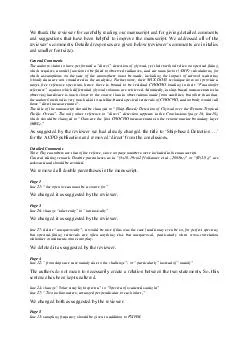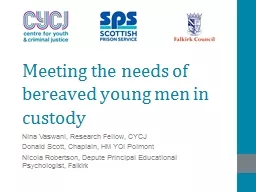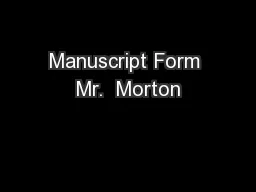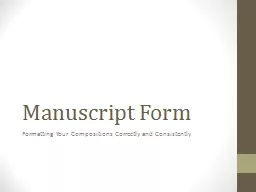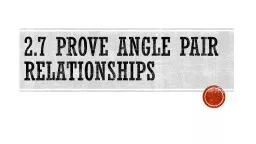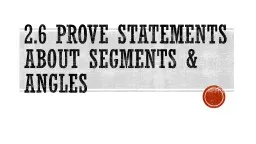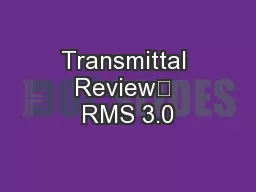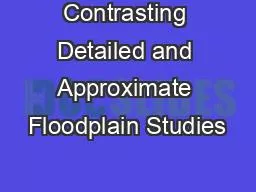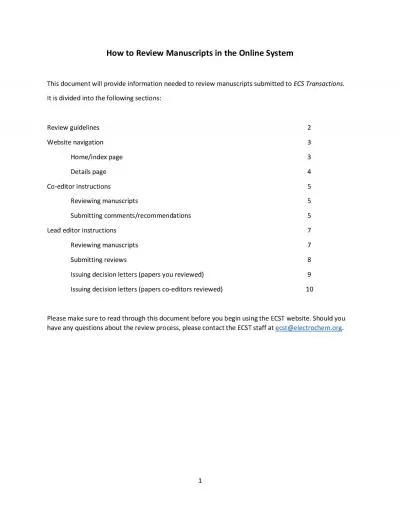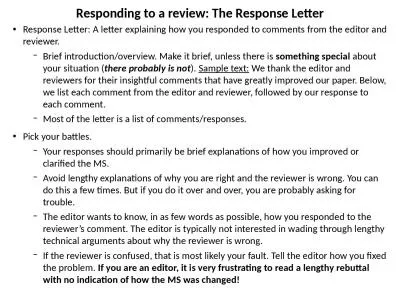PDF-We thank the reviewer for carefully reading our manuscript and for giving detailed comments
Author : celsa-spraggs | Published Date : 2014-12-28
We addressed all of the reviewers comments Detailed responses are given below reviewers comments are in italics and smaller font size General Comments The authors
Presentation Embed Code
Download Presentation
Download Presentation The PPT/PDF document "We thank the reviewer for carefully read..." is the property of its rightful owner. Permission is granted to download and print the materials on this website for personal, non-commercial use only, and to display it on your personal computer provided you do not modify the materials and that you retain all copyright notices contained in the materials. By downloading content from our website, you accept the terms of this agreement.
We thank the reviewer for carefully reading our manuscript and for giving detailed comments: Transcript
We addressed all of the reviewers comments Detailed responses are given below reviewers comments are in italics and smaller font size General Comments The authors claim to have performed a direct detection of glyoxal yet their method relies on spect. Chapter 5 Parallel Lines and Related Figures. 5.1 Indirect Proof. Learner Objective: Students will prove statements using "Indirect Proof".. Warm-Up. M is the midpoint of. Given:. Prove:. D. A. C. B. Nina Vaswani, Research Fellow, CYCJ. Donald Scott, Chaplain, HM YOI . Polmont. Nicola Robertson, Depute Principal Educational Psychologist, Falkirk. Why do we need Seasons for Growth in HM YOI . Polmont. From Napier, R.W., & . Gershenfold. , M.K., Groups: Theory and Experience. Boston; Houghton Mifflin, 1973.. Team building and maintenance roles. Usually helpful. Encouraging. : being friendly, warm, and responsive to others; accepting others . CFS. What is manuscript?. n.. . 1. . A handwritten book, poem, or other document, or a collection of such handwritten documents bound together: . The contents of the manuscript include a romance and a saint's life.. Introduction. Manuscript:. Any composition that is prepared for someone else to read for. Grading. Publication. Editing. Etc.. Form:. Shape. Appearance. Structure. Model. Introduction. It is Important to Remember:. . Theorems. m. example. Write a proof.. Given. : . Prove. : . . Statements Reason. . 1.. ___________________ _______________________. . 2.. ___________________ _______________________. . 3.. ___________________ _______________________. . proof. Proof: Logical statement that shows a statement is true.. Two-column proof: Statements & corresponding reasons that show an argument in a logical order.. . . Review example. The Civil Engineering Tech (CET) receives notification from the contractor that a transmittal is being submitted from the contractor.. The CET will check the transmittal for completion and either accept the package for review or return for completion.. Review Committee Training. 3760 South Highland Drive, . 3rd . Floor, Board Room. April . 18, 2018 11:00am . – . 2:00 . pm. 1. AGENDA . 2. Participant Orientation to Grant Funding and Purpose. Committee Member Introductions. Cezmi Akdis. (Editor-in-Chief). When a paper arrives at . the. journal’s editorial office,. Editorial assistants check full adherence to instructions to authors:. The Basics: Following the Author Guidelines. Matagorda County, TX. CE 394K Fall 2017. Sydney Kase. Essential Questions. Why does FEMA create the . NFHL. and . FIRM. maps?. Why does it take so long to produce effective floodplain maps?. What does the . 10 4. Please click the Return to Index button to return to the home/index page and select the next manuscript. Issuing decision letters (papers co - editors reviewed) When a co - editor reviews Response Letter: A letter explaining how you responded to comments from the editor and reviewer.. Brief introduction/overview. Make it brief, unless there is . something special . about your situation (. Best book to win online dice
Download Rules Of Document
"We thank the reviewer for carefully reading our manuscript and for giving detailed comments"The content belongs to its owner. You may download and print it for personal use, without modification, and keep all copyright notices. By downloading, you agree to these terms.
Related Documents

